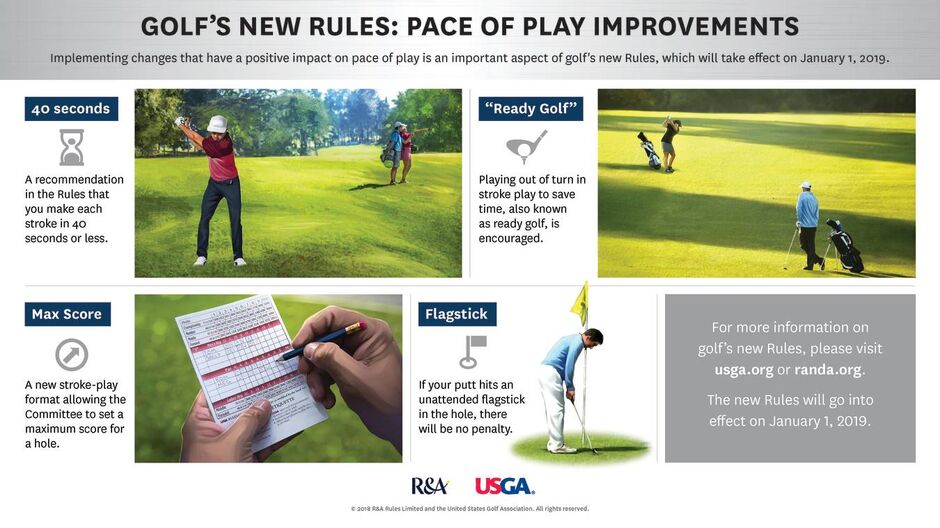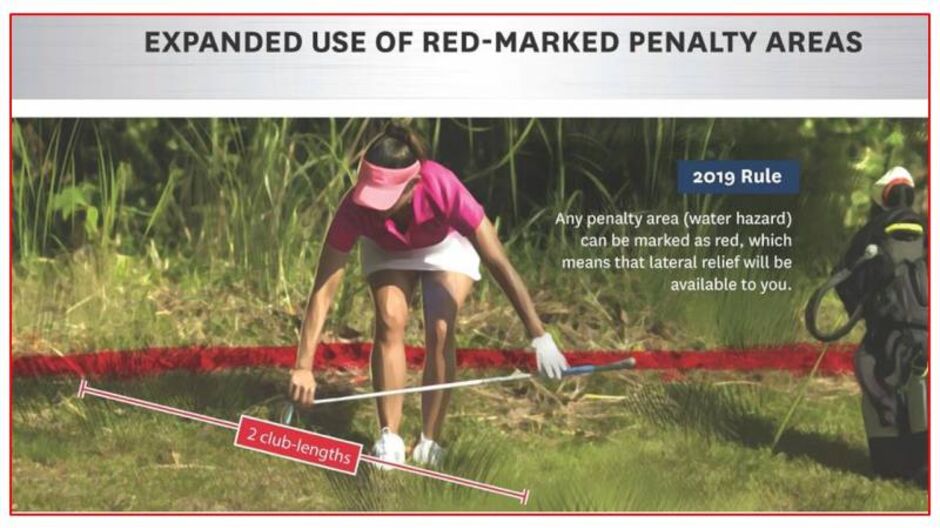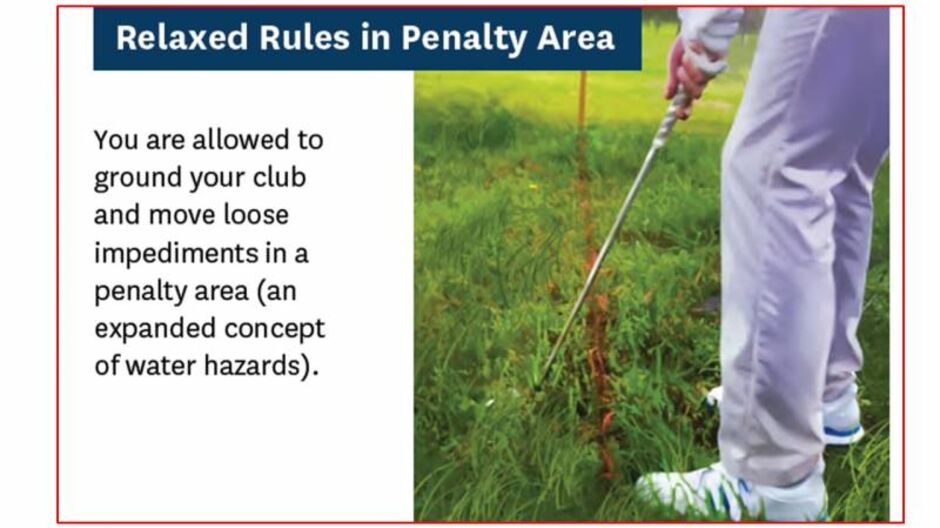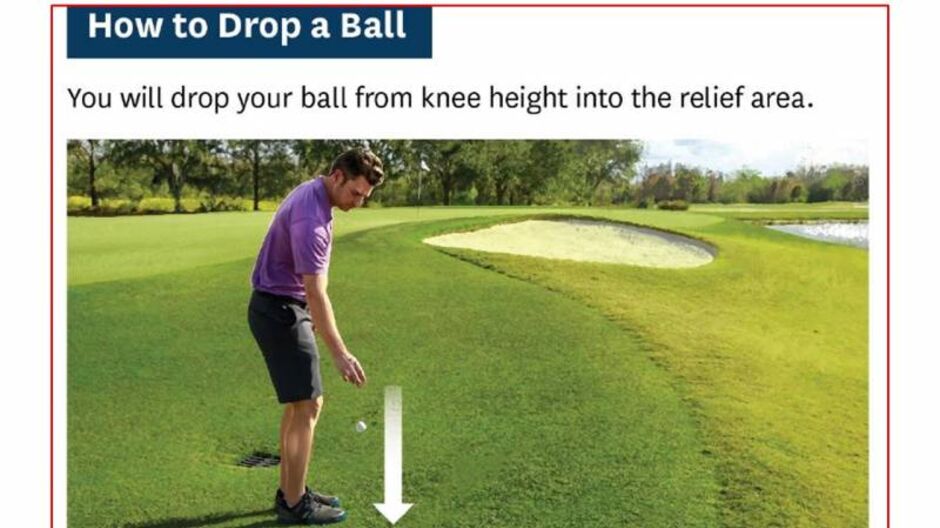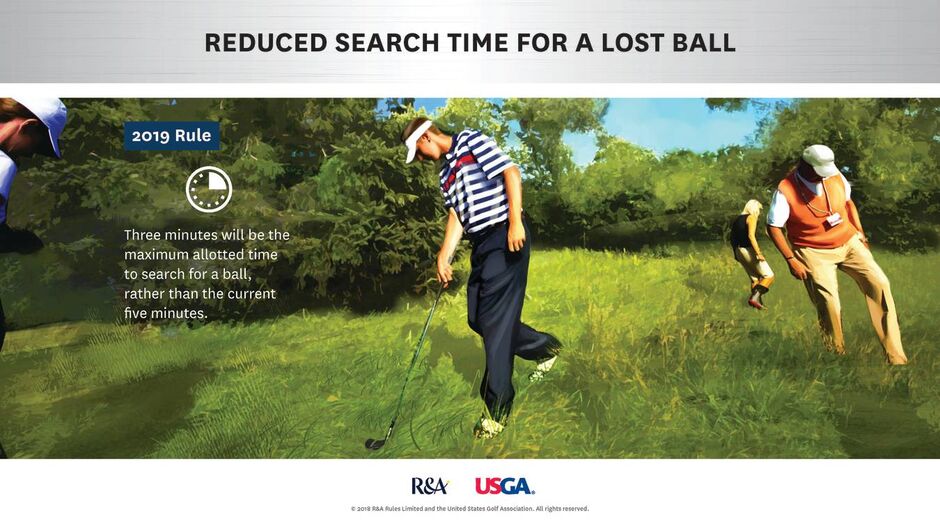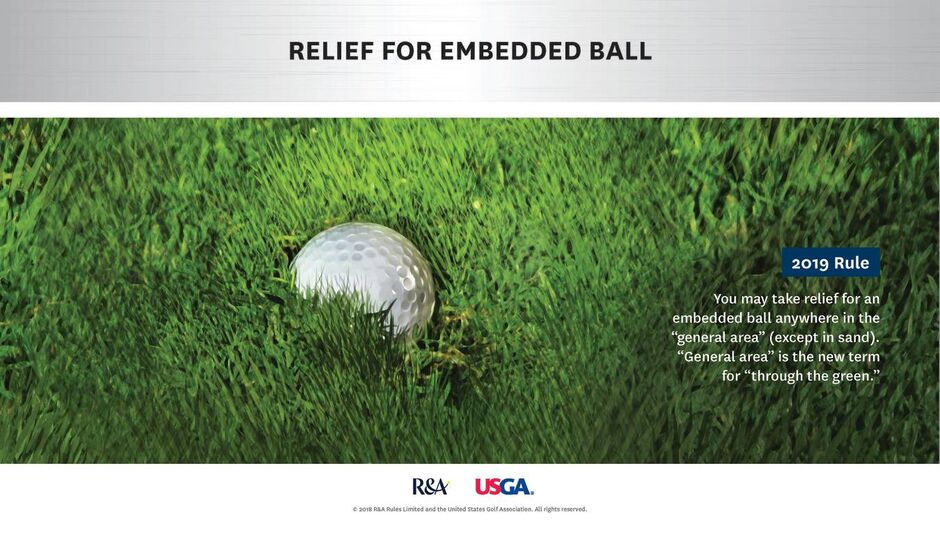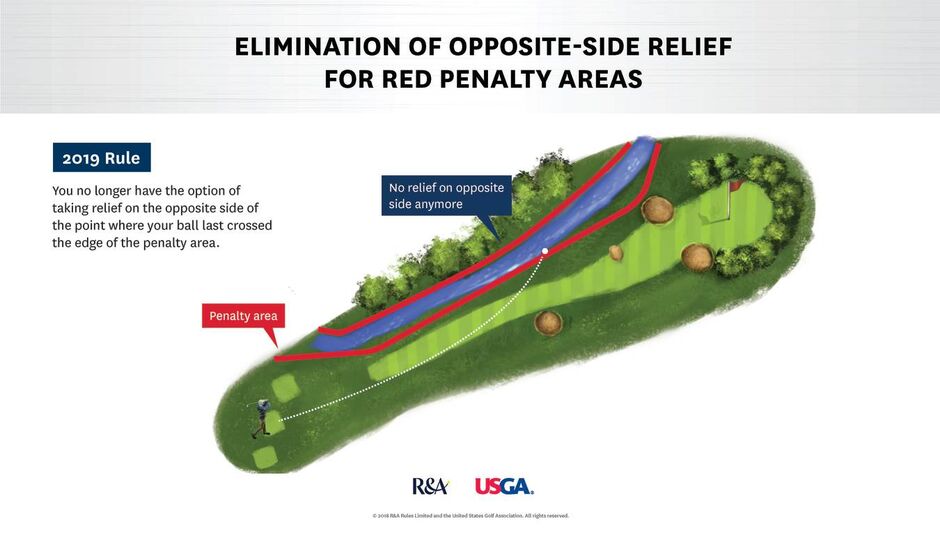New Definitions:
-
Penalty Area - an area from which relief with a 1 shot penalty is allowed (formerly 'Water Hazard'). Still defined as either yellow or red.
-
Relief Area - the area in which the ball must be dropped (and come to rest) when taking relief under a rule.
-
Reference Point - the point from which the size of the Relief Area is measured.
-
General Area - anywhere on the course except Teeing areas, Penalty areas, Bunkers and Greens (formerly 'Through the Green')
-
Temporary Water - formerly 'Casual Water'
Pace-of-play support
- Ready Golf now encouraged in both
Strokeplay
and Match Play.
- Golf At Goodwood will be continuing with the
Ready Golf pace of play policy in 2024.
Elimination of 'Ball Moved' penalties
- No penalty for
accidentally moving a ball on the putting green or in
searching for a ball.
Relaxed Putting Green rules
- No penalty if a ball hits an
unattended flagstick in the hole.
- Players may
repair damage to the green, whether their ball is on the green or not. This includes old hole plugs, spike marks and damage made by shoes, animals and maintenance practices (but not aeration holes, unless there is a local rule in place).
- No penalty for
touching the line of putt.
- A ball
resting against the flagstick is deemed holed as long as part of the ball is below the surface of the ground.
- Interference by a
Wrong Green now includes the player's stance.
Relaxed Bunker rules
- No penalty for
moving loose impediments (stones, leaves, etc.) in a bunker or for generally
touching the sand with hand or club (but not directly in front or behind the ball or in making a backswing or practice swing).
- An extra relief option for an
unplayable ball, allowing the ball to be played from outside the bunker with a two stroke penalty.
- Relaxed rules for Penalty Areas
- Expanded use of red penalty areas where lateral relief is allowed.
- No penalty for moving loose impediments, touching the ground or water or taking a practice swing in a Penalty Area.
Simplified way of Taking Relief
- New procedure for taking relief by dropping in a specific Relief Area.
- Ball dropped from knee height and must stay within the Relief Area.
Lost Ball & Provisional Ball
- A ball is
Lost if not found within
3 minutes of commencing search, although a reasonable amount of additional time is allowed to get to and identify a ball that has been spotted within the 3 minutes.
- A
Provisional Ball may be played after the player has moved forward, at any time up to the end of the 3 minute search period.
Alternative to Stroke & Distance
- A new
Local Rule to allow golfers to drop the ball in the vicinity of where the ball is lost or out of bounds under a two-stroke penalty.
- This Local Rule is
not available in Golf At Goodwood
Qualifiers and is not intended for higher levels of play, such as professional or elite level competitions.
- Other clubs may adopt this Local Rule for competition play, so bear this in mind when entering any away competitions.
- We would
encourage golfers to
adopt this rule in social golf and we
welcome any feedback you may have. We will make a decision on whether to introduce this local rule nearer the Spring.
Additional Changes
- No need to announce the intention to
lift a ball to identify it or determine if it is in an abnormal condition (ball must be marked first).
- A ball may be
marked by holding a club behind or to the side of it.
-
Natural objects may be moved to see if they are loose or unattached. If they are found to be attached they must be replaced as close as possible to their original position.
- No penalty for a
multiple hit or if the
ball accidentally hits the player.
- Relief for an
embedded ball is available anywhere in the General Area and the Relief Area is 1 club length from a point directly behind the ball.
- No
"opposite side relief" from red Penalty Areas (unless there is a local rule in place).
- A player may keep using and/or repair any
club damaged during the round, no matter what the damage and even if the player damaged it in anger.
- A player is not allowed to replace a damaged club, except when it is damaged by an outside influence or by someone other than the player or caddie.
- A new form of Stroke Play called
'Maximum Score' where the maximum score for a hole is set at a specific number (e.g. 8), or twice the par of the hole, or nett double bogey. For example, if the maximum score for a hole is set at 8 and you lose your ball and decide not to complete the hole, your score is entered as 8. Similarly, once you have played 7 (or less) shots you can pick up your ball and record 8 on the scorecard. For CONGU
Qualifying Competitions the maximum score must be set at a minimum of 5 over par (equivalent to net double bogey for a player receiving 3 shots on the hole).
PLEASE CLICK HERE TO SEE EXPLANATORY VIDEOS ABOUT THE MAIN CHANGES
R&A RULES OF GOLF WEBSITE
Click to go to the
Official Rules of Golf website
, which is made up of 6 parts, including:
-
The Rules of Golf (full version) which is intended for those who administer the game and who need to answer the variety of questions that can arise in relation to golf competitions.
-
The Rules of Golf (Player's Edition) which is intended for you, the golfer. It contains the Rules situations that occur most commonly on the course and is an abridged version of the full Rules. Although its text is edited, it gives the same answer that is in the full Rules of Golf and so it is a functioning Rule book.
-
Definitions - over 70 defined terms that form the foundation around which the Rules are written.
-
Interpretations - provided only for aspects of the Rules that are considered to require additional clarification (replaces the old 'Decisions' book).
R&A RULES MODERNISATION WEBSITE


